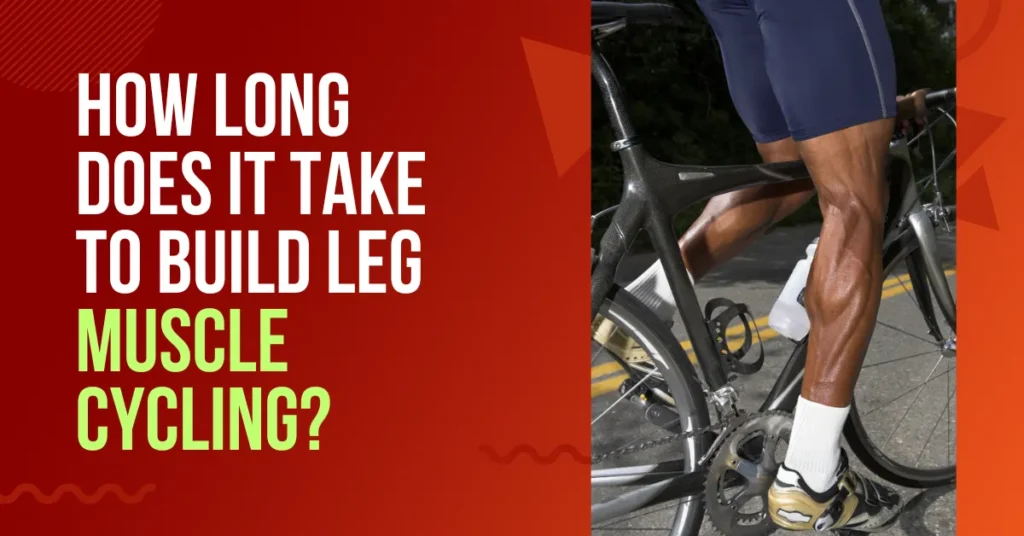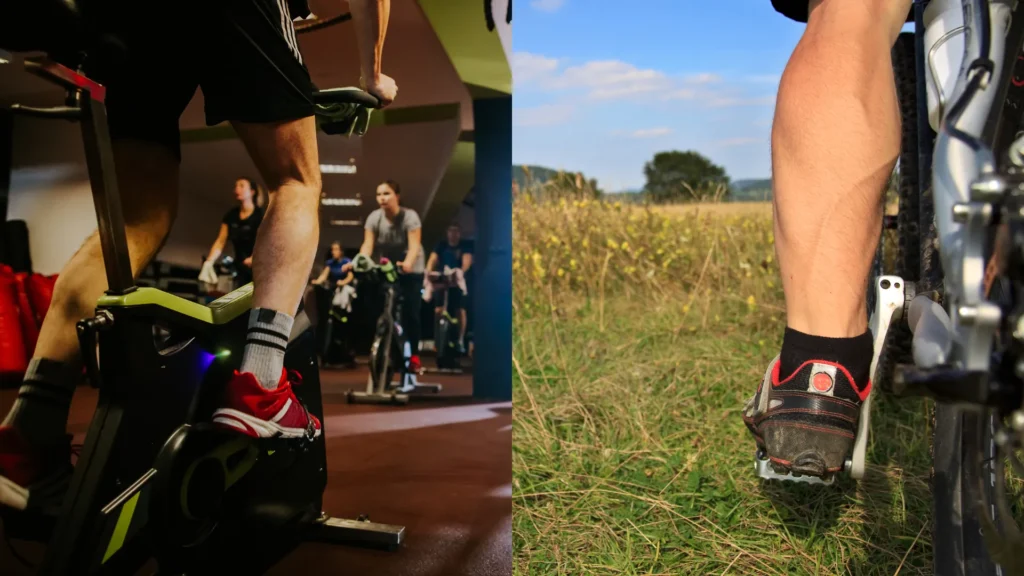
Building leg muscles through cycling is a popular fitness goal for many enthusiasts. Cycling not only helps improve cardiovascular health but also engages various muscle groups, leading to stronger and more toned legs. If you are wondering how long it takes to build leg muscle through cycling, several factors come into play.
Before delving into the timeframe, it’s crucial to grasp the process of leg muscle growth. When you cycle, your leg muscles undergo microscopic tears. During the recovery phase, the body repairs these tears, making the muscles stronger and more substantial.
Benefits of Cycling for Leg Muscle Building
Cycling offers a range of benefits for leg muscle development. It engages major muscles like the quadriceps, hamstrings, calves, and glutes. Moreover, cycling is a low-impact exercise, reducing the strain on joints and ligaments compared to other high-impact activities.
Creating a Cycling Routine for Leg Muscle Building
| Day | Cycling Workout | Duration | Intensity | Additional Exercises |
| Monday | Long Distance Ride | 60 minutes | Moderate | Squats, Lunges |
| Tuesday | Interval Training | 45 minutes | High | Leg Presses, Calf Raises |
| Wednesday | Rest day | – | – | – |
| Thursday | Hill Climbs | 60 minutes | Challenging | Deadlifts, Step-ups |
| Friday | Short Intense Sprints | 30 minutes | Max Effort | Leg Extensions, Glute Bridges |
| Saturday | Long Distance Ride or Group Cycling | 90 minutes | Moderate | Box Jumps, Hamstring Curls |
| Sunday | Rest day | – | – | – |
Note: Adjust the duration and intensity based on your fitness level and gradually increase the challenge as you progress. Always prioritize safety and proper form during workouts.
To understand how long it takes to build leg muscle through cycling, several factors come into play. These factors include:
1. Cycling Intensity and Frequency
The intensity and frequency of your cycling sessions significantly influence muscle development. Regular cycling with moderate to high intensity engages the muscles, leading to growth and toning. A consistent cycling routine of at least 3 to 5 times per week will yield better results than sporadic rides.
See also: What Muscles Are Worked When Cycling? Beyond The Legs
2. Individual Physiology
Every individual’s body responds differently to exercise, including cycling. Genetics, metabolism, and existing muscle mass play a crucial role in determining how quickly your leg muscles will grow. While some individuals may see noticeable changes within a few weeks, others might take longer.
3. Nutrition and Diet

A well-balanced diet rich in protein, carbohydrates, and essential nutrients is vital for muscle development. Protein is especially important for repairing and building muscle tissue. Ensure you consume enough calories to support your cycling and muscle-building efforts.
4. Rest and Recovery
Adequate rest is essential for muscle recovery and growth. When you cycle, you cause micro-tears in the muscle fibers, and during rest, these fibers repair and become stronger. Ensure you allow your muscles ample time to recover between intense cycling sessions.
See also: Front Knee Pain When Cycling
5. Age and Fitness Level
Age and fitness level can affect the rate of muscle development. Younger individuals and those new to cycling may experience faster gains in muscle size and strength compared to older or seasoned cyclists.
6. Resistance Training
While cycling is an effective lower-body workout, incorporating resistance training can enhance muscle growth. Activities like hill climbing, sprint intervals, and weight training complement cycling and promote muscle development.
7. Duration of Cycling Sessions
The duration of your cycling sessions also matters. Aim for rides that last at least 30 to 60 minutes, with varying levels of intensity, to challenge and stimulate your leg muscles adequately.
8. Consistency is Key
Consistency in your cycling routine and lifestyle choices is crucial for achieving significant muscle growth. Patience and dedication are essential as muscle development is a gradual process.
Factors Influencing Muscle Growth
1. Protein Intake and Synthesis
Proteins are the building blocks of muscles. When you cycle, your muscles experience stress and damage, and protein intake helps repair and strengthen them. Ensure your diet includes adequate protein sources like lean meats, beans, lentils, and dairy products.
See also: Can we do Cycling after Dinner?
2. Hormonal Response
During cycling, the body releases growth hormones and testosterone, both of which are instrumental in muscle growth. These hormones aid in muscle repair and stimulate protein synthesis.
3. Endurance vs. Power Training
Different types of cycling workouts focus on endurance or power. Endurance cycling promotes lean muscle development, while power training emphasizes muscle size and strength.
4. Rest and Sleep
Rest and quality sleep are essential for muscle recovery. During sleep, the body produces growth hormones that aid in muscle repair and development.
Effective Training Techniques

1. Hill Climbing
Incorporate hill climbing into your cycling routine to engage the leg muscles more intensely. Climbing challenges the muscles, promoting growth and strength.
2. Interval Training
Interval training involves alternating between high-intensity bursts and moderate recovery periods. This technique stimulates muscle fibers and enhances overall performance.
3. Weighted Cycling
Consider using a stationary bike or adding weights to your bike to increase resistance. Weighted cycling provides additional challenges for the leg muscles.
Conclusion
Building leg muscle through cycling is an effective and enjoyable way to achieve stronger and toned legs. Remember to combine regular cycling with appropriate nutrition, rest, and additional exercises to optimize results. Be patient, stay consistent, and enjoy the journey to healthier and fitter legs!
FAQs
Can you build leg muscle by cycling?
Yes, cycling can help build leg muscles. Regular cycling engages various leg muscles, leading to strength and toning over time.
How long does it take to build muscle from biking?
The time to build muscle from cycling varies based on factors like frequency, intensity, nutrition, and rest. Generally, noticeable results can be seen after a few weeks of consistent training.
How long will it take my legs to get used to cycling?
The time for your legs to get used to cycling depends on your fitness level and how often you cycle. It may take a few weeks for your muscles to adapt to the new activity.
Does cycling tone legs fast?
Cycling can be effective for toning legs, but the speed of results depends on individual factors and dedication to the cycling routine.
What not to do after cycling?
After cycling, avoid overexertion and sudden inactivity. Stretch gently, stay hydrated, and avoid excessive stress on your legs to prevent injuries.






